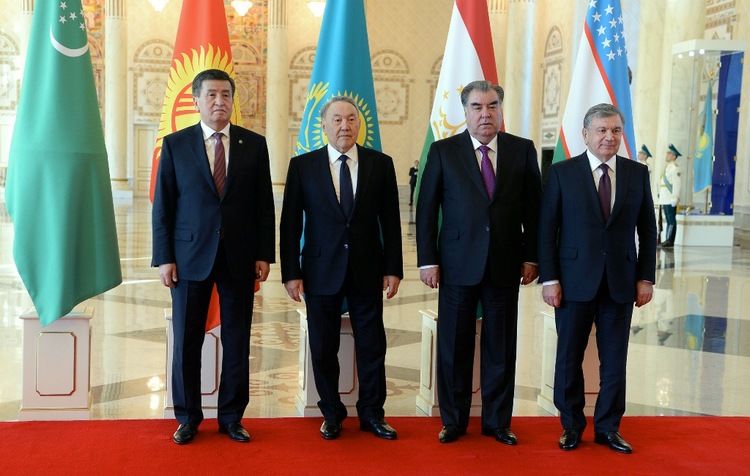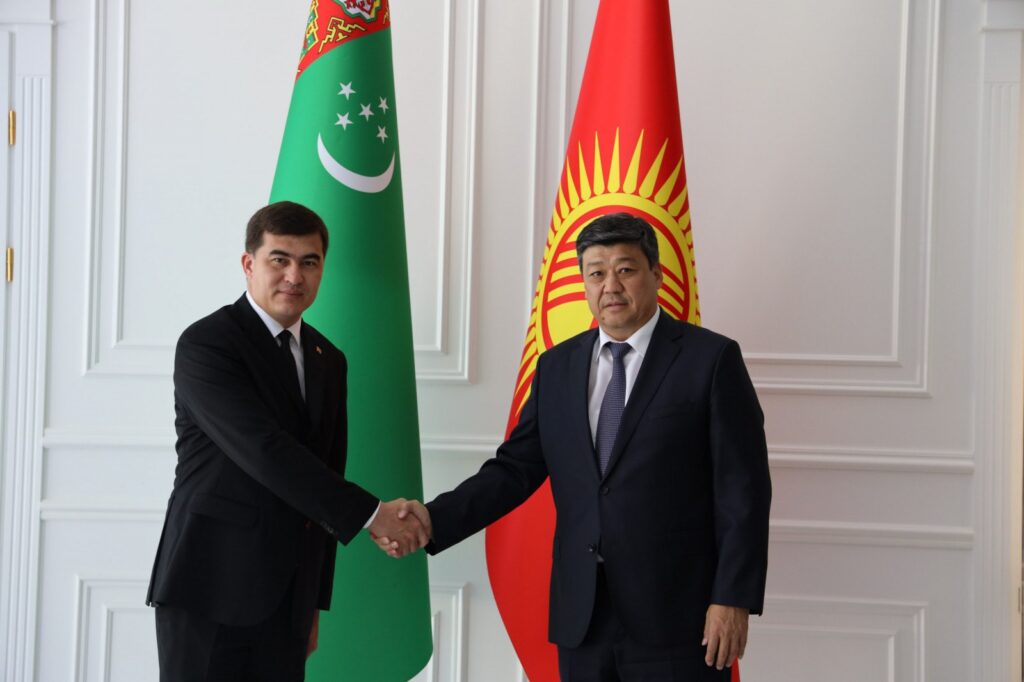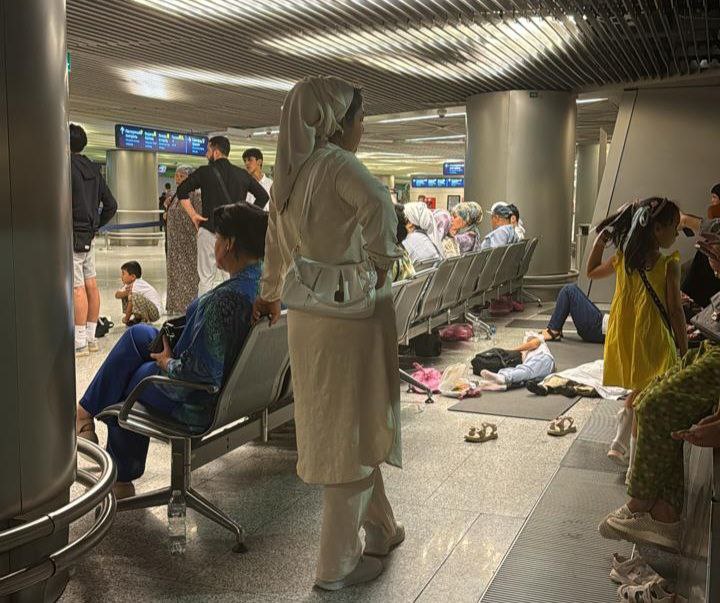BISHKEK (TCA) — On March 15, a consultative meeting of Central Asian leaders was held in Astana. Presidents of Kazakhstan, Kyrgyzstan, Tajikistan, and Uzbekistan, and the Speaker of Turkmenistan’s Parliament participated.
It was the first summit in which the Central Asian leaders met separately. Previously, the presidents of the five countries participated in multilateral meetings within the framework of the CIS, SCO and other platforms.
It is symbolic that the meeting was held on the eve of the Nooruz holiday (to be celebrated on March 21), which a symbol of friendship, peace and renewal.
Exchange of views
At the end of the meeting, President of Kazakhstan Nursultan Nazarbayev made a statement for the media.
The Central Asian leaders have not met in such a composition for ten years, he said. The Central Asian states are now actively cooperating and developing. In a short period of time, problems have been resolved that the countries had faced for decades. A constructive exchange of views took place on all topical issues of the international agenda including regional security, cross-border issues, transport communication, water and energy resources, tariff policy, trade, economic and cultural-humanitarian cooperation.
In the course of one year, since March 2017, all the presidents of the CA countries held meetings with each other. Nazarbayev stressed “the tremendous work with neighbors that Uzbekistan has done”. In a short period of time, Uzbek President Shavkat Mirziyoyev, had “thawed” many problems accumulated over the past 20 years, Nazarbayev said.
He also spoke about the contribution of Kyrgyzstan’s President Sooronbai Jeenbekov who intensified contacts with the nearest neighbors to solve “long-standing issues and problems”.
Nazarbayev also positively assessed the intentions of Tajik President Emomali Rahmon to hold an international high-level conference on water in June in Dushanbe.
The International Fund for Saving the Aral Sea will mark its 25th anniversary this year, and Turkmen President Gurbanguly Berdymukhamedov suggested holding an anniversary summit of the heads of the Fund’s founder states in August.
The Central Asian countries also need to promote industrialization, digitalization and keep up with the technological revolution.
The meetings of the leaders of the Central Asian countries will not affect the relations of these countries with such major partners as Russia and China, Nazarbayev said.
The heads of state agreed to meet in this format every year before the Nooruz holiday in the capitals of the Central Asian countries. The next meeting will be held in Tashkent, Uzbekistan in 2019.
Good neighborly relations
After the last meeting with Kyrgyzstan President Jeenbekov in December 2017, all bilateral issues had been resolved, and the bilateral Road Map is now working, Nazarbayev said.
It is necessary to rebuild regional cooperation in the interests of not only current but also future generations of Central Asian countries. The meetings of the heads of state will help develop the regional integration, and will enhance the role and place of the region in the world, Jeenbekov said.
The significance of each country will increase if all countries come forward from a unified position. Historically, the Central Asian region has always been a region of religious and interethnic tolerance.
In trade and economic cooperation, it is important to make the most of the existing potential of the region, create more favorable conditions for the free movement of goods and services between the countries by reducing existing barriers to trade and bureaucratic delays, Jeenbekov said.
The Kyrgyz President suggested creating free transit corridors, and improving cooperation in passenger and freight traffic and transit through the Central Asian countries.
Expansion of international roads and railways, as well as creation of logistics centers and transport terminals, is a priority, Jeenbekov said.
Water and energy cooperation
Water problems are the most important issue for the region. About 70 million people live in the basin of Amu Darya and Syr Darya rivers, Nazarbayev said. The heads of state agreed to jointly resolve issues in the interests of all states on hydropower construction and use of water resources.
Water issues in Central Asian countries should not be subject to political bargaining, Nazarbayev added.
Ensuring energy security is among the priority areas for sustainable development of the entire region. The CA countries have significant energy potential, including hydrocarbon and hydropower resources. Therefore, it is necessary to establish long-term mutually beneficial cooperation in the water and energy sector, the heads of state concluded.
Incredible breakthrough
At his meeting with Uzbekistan’s president before the summit, Nazarbayev stressed the “incredible breakthrough” in the relations between the two countries. The trade has been increased by 44% in only one year and only by rail, Mirziyoyev said.
Kazakhstan has fully completed the process of demarcation of its border with Uzbekistan. “Everything has been signed. There are no unresolved issues left. This is a very important point,” Nazarbayev said.
Trade
Nazarbayev suggested that the Central Asian countries buy goods from each other.
According to statistics, Kazakhstan imports some goods from Europe while the countries of Central Asia produce them. For instance, Tajikistan imports metal from Europe to build a power plant, while the Karaganda Metallurgical Plant in Kazakhstan produces such fittings, Nazarbayev said.
Uzbekistan and Tajikistan could supply more vegetables and fruit to Kazakhstan while “we still import strawberries from Israel,” Nazarbayev said.
According to the UN, over the past ten years, the average GDP growth of Central Asian countries was 6.2%, while the whole world was developing at a rate of 2.6%. The trade turnover of the Central Asian countries has doubled in ten years — from $1.6 billion to $3.1 billion.
Turning point
Experts forecast that 2018 will be a turning point in the regional cooperation for the Central Asian countries. They will start jointly implement new projects that meet the long-term interests of the five states.
Some political scientists believe that in the long term it is possible to create a Central Asian union. This idea was first suggested after the collapse of the Soviet Union, but for many reasons it remained unfulfilled.
Contradictions between the leaders of the newly independent states of Central Asia were among the reasons. For example, then Turkmen President Saparmurat Niyazov distanced himself from the other countries of Central Asia and announced Turkmenistan’s neutrality in 1995. In Tajikistan, many politicians at that time were convinced that in such an alliance the rights of the Tajiks would be infringed.
Creating a Central Asian union is now possible, some experts believe. However, it is still too early to consider Central Asia as an entity. Even in the economic aspect, the countries have different vectors. Kyrgyzstan and Kazakhstan are the Eurasian Economic Union members while Uzbekistan is not planning to join it and Tajikistan hesitates in making such decision.
Experts also believe that partnership in Central Asia mainly depends on personal relations between the Uzbek and Kazakh presidents.









